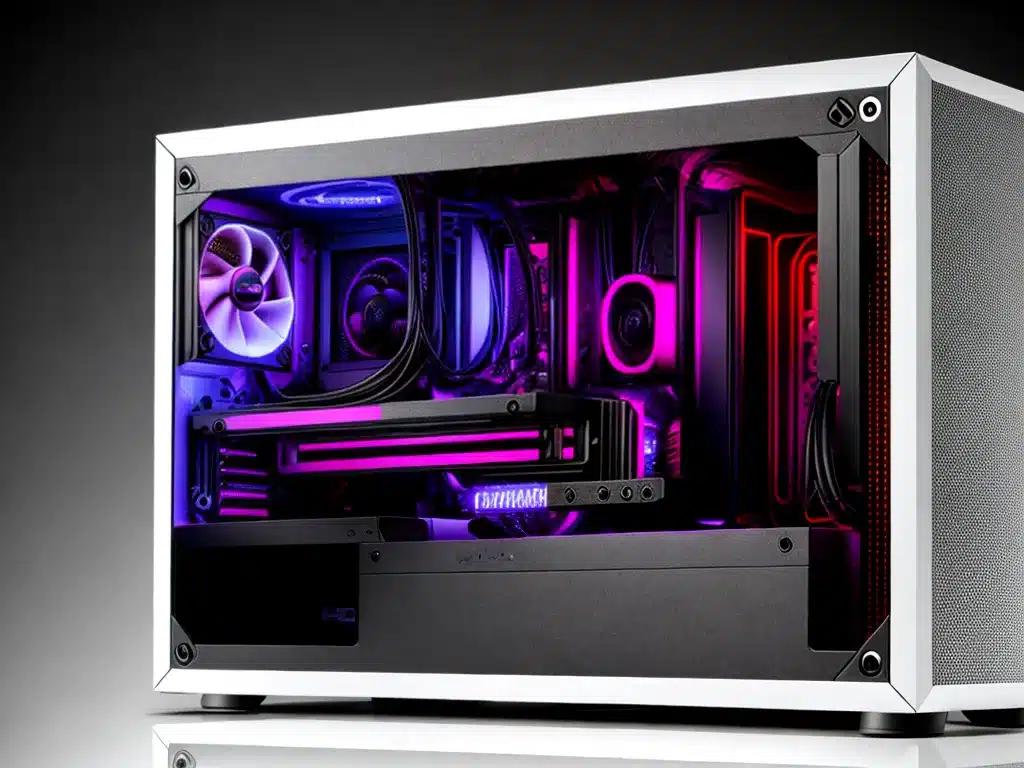
Building a powerful gaming PC in a tiny case can be challenging, but also very rewarding. With careful planning and component selection, it is possible to cram a capable gaming rig into a console-sized Mini-ITX chassis. Here’s what I learned from my experience building a compact yet mighty gaming PC:
Choosing the Right Mini-ITX Case
The first step is picking a suitable Mini-ITX case. There are many compact options on the market, but size and compatibility are key factors:
- The case should support full-size GPUs up to 300mm long. Many mini-ITX cases only fit smaller cards.
- It needs room for an SFX power supply. Larger ATX PSUs won’t fit in petite cases.
- Sufficient cooler clearance is crucial, at least 45mm is recommended.
- Make sure the case can fit the components you want to use. Measure carefully!
Some good Mini-ITX cases for compact gaming builds are the NZXT H210, Cooler Master NR200P, and Lian Li TU150. I went with the popular NZXT H210i.
Selecting Compact Yet Powerful Components
Choosing the right components is critical for a successful diminutive gaming rig. I aimed for excellent gaming performance while minimizing size:
CPU
- For the CPU, I chose the AMD Ryzen 5 5600X. This 6-core 12-thread chip provides great gaming performance and stability.
- The included Wraith Stealth cooler is compact. An affordable aftermarket cooler like the Cooler Master Hyper 212 also fits for extra cooling.
GPU
- For graphics, I went with an Nvidia RTX 3060 Ti FE card. At just 242mm long, it packs a punch for 1080p and 1440p gaming.
- More compact cards like the Zotac RTX 3060 Twin Edge OC (201mm) are also options.
Motherboard
- The ASUS ROG Strix B550-I motherboard has all the features I need, including Wi-Fi 6, 2.5 Gb LAN, and USB 3.2 Gen 2.
- Its mini-ITX form factor fits perfectly. Just watch for tight clearances around the CPU socket when installing coolers and RAM.
RAM
- 2x8GB sticks of fast Corsair Vengeance LPX 3600 MHz DDR4 RAM provide ample memory. Low profile sticks avoid clearance issues.
Storage
- For storage, I relied on fast M.2 NVME SSDs like the Samsung 970 Evo Plus. SATA SSDs or HDDs take up precious space and cables.
PSU
- The compact Corsair SF600 600W SFX power supply provided enough clean, stable power. It’s much smaller than a standard ATX PSU.
Building Tips
Putting everything together in a small case takes patience and care. Some recommendations:
- Build outside the case first to ensure components work properly before cramming them in.
- Be very careful with component clearances. Check twice for conflicts between coolers, RAM, cards, cables, etc.
- Plan all cable routes ahead of time. Good cable management is critical with limited space.
- Use cable extensions where helpful, like for the 24-pin motherboard cable.
- Settle for less storage than a normal build. Prioritize M.2 SSDs over 2.5″ SSDs and HDDs.
Thermals and Noise
Compact cases generally run hotter and louder than large cases with more airflow. Some things that help:
- Undervolt the GPU slightly using MSI Afterburner. This reduces heat and power consumption.
- Create custom fan curves in BIOS to run fans faster at lower temperatures.
- Add case fans for intake and exhaust. The NZXT H210i has room for 5 total fans.
- Limit CPU and GPU boost frequencies if temps are concerning.
In the end, my Mini-ITX build ran surprisingly cool and quiet with some minor tweaks. The powerful components still deliver great 1440p gaming performance on par with a full-sized PC. With the right case and parts, it’s clearly feasible to build a gaming beast in a petite package! Let me know if you have any other questions about maximizing performance in a mini gaming PC.












